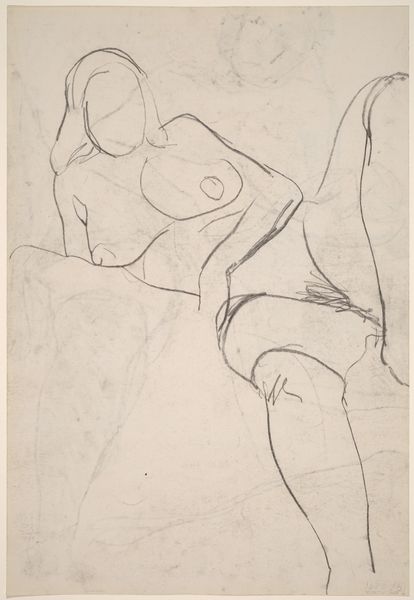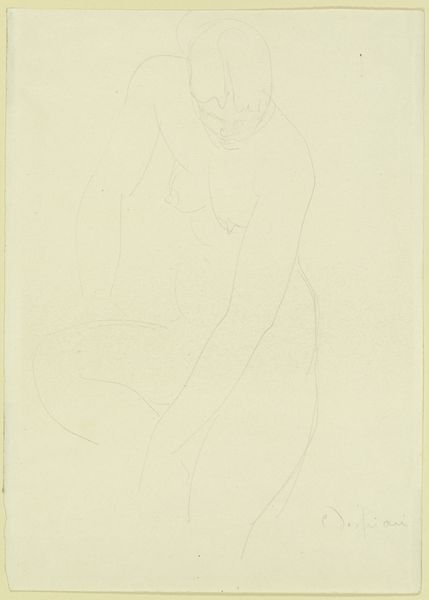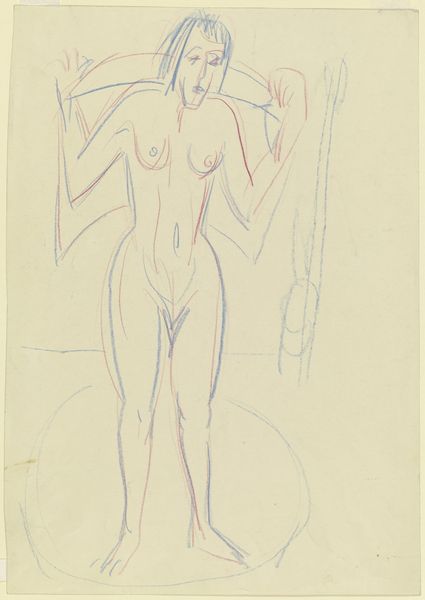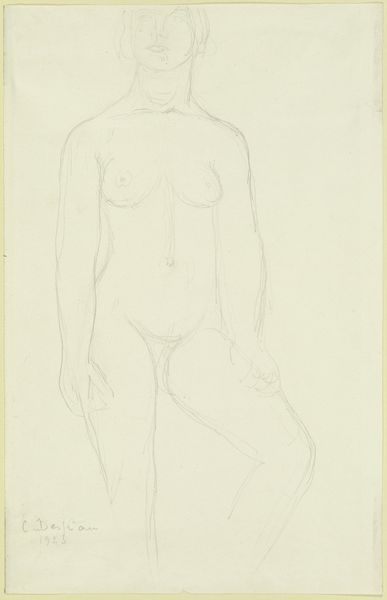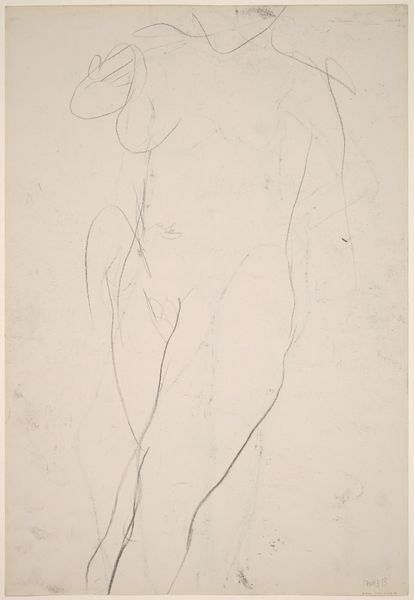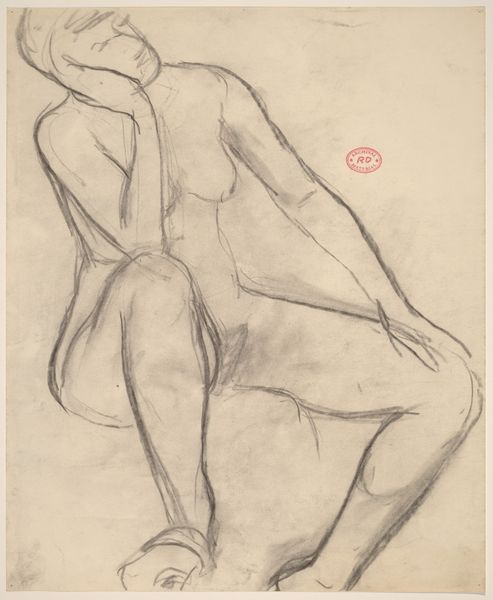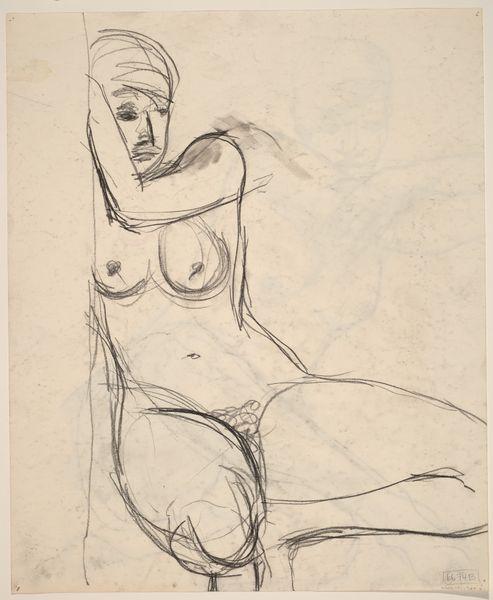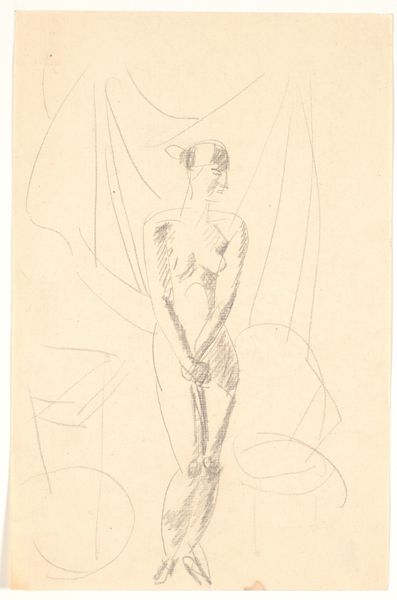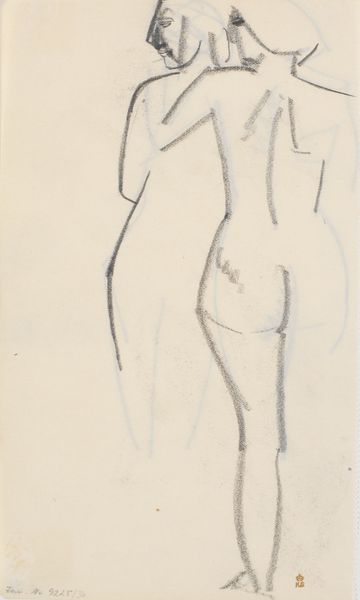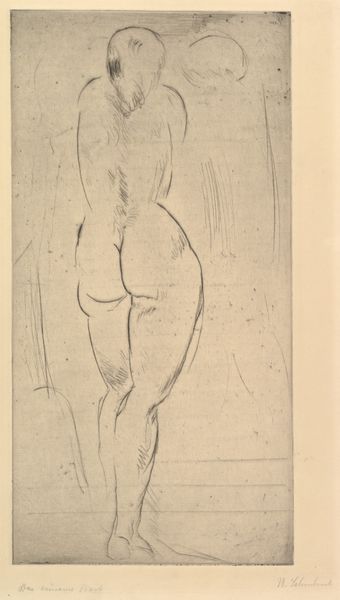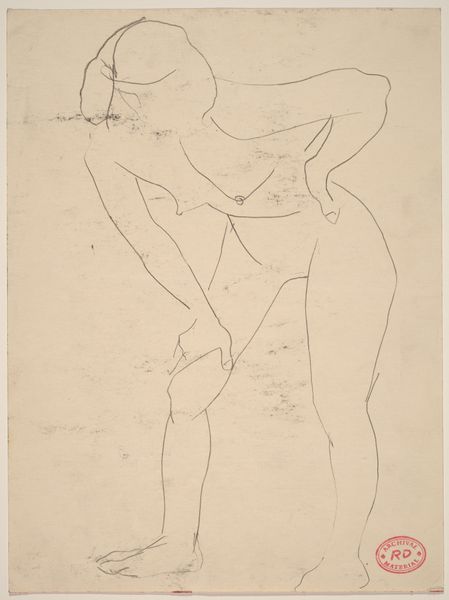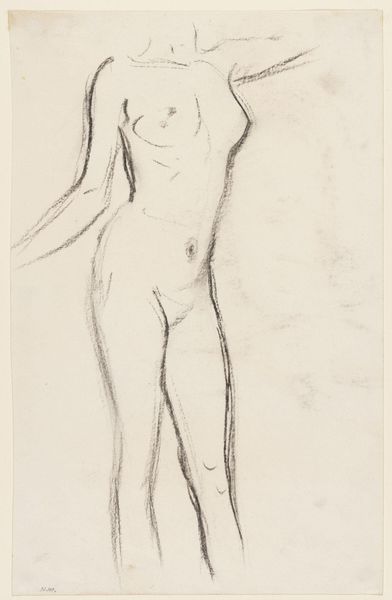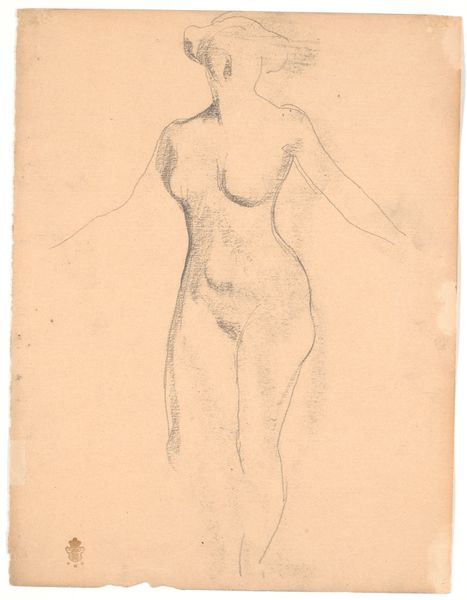
drawing, pencil
#
portrait
#
drawing
#
german-expressionism
#
figuration
#
pencil
#
expressionism
#
nude
#
modernism
Copyright: Public Domain
Editor: Here we have Ernst Ludwig Kirchner's "Sitting Female Nude," created around 1911 using pencil. It’s quite gestural and the lines feel raw. What stands out to me is the visible process of its making; it feels less about idealizing the nude figure and more about the act of drawing itself. What do you see in this piece? Curator: For me, Kirchner's drawing underscores a significant shift in early 20th-century art: a deliberate departure from academic refinement towards a celebration of the immediacy and physicality of the artistic process. The very visibility of the pencil lines, the unfinished quality, speak volumes. Think about the context; he’s working in Dresden, part of Die Brücke, confronting rapid industrialization. How might his chosen medium and rough technique reflect that upheaval? Editor: It almost feels like he’s rebelling against traditional art expectations. Instead of a polished, finished piece, we see the labor. Curator: Precisely. Consider the materials themselves: inexpensive pencil and paper, readily available commodities. This democratizes art-making, challenging the elite world of oil paints and grand canvases. Is he not only depicting the female form, but also critiquing the structures that define "high" and "low" art through his choices? Where is the line between craft and fine art? Editor: So, it’s not just a nude drawing; it's making a statement about art itself. I hadn't thought of it that way. The materials aren't neutral. Curator: Exactly. This seemingly simple drawing pulls us into a complex web of material culture, artistic production, and social commentary. These expressionist artists used raw artistic processes to reflect what they viewed as rawness in society. Editor: It gives me a lot to consider - I now realize the importance of reflecting on what the artist consciously selected as their mode for producing art. Thanks! Curator: Indeed. Looking beyond representation toward process unveils a richer understanding of the artist’s intent and the artwork’s cultural relevance.
Comments
No comments
Be the first to comment and join the conversation on the ultimate creative platform.
